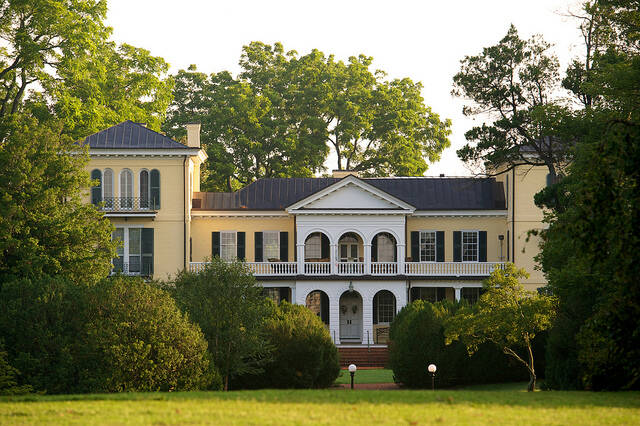Why should I care about Sweet Briar College, whether it lives or dies? The press cares—The New York Times, Washington Post, the Chronicle of Higher Education, and a score of blogs have barked its tearful story: because of shrinking enrollment, this beautiful all women’s little Liberal Arts college in the hills of Virginia, with its stable of horses which can take you cantering over the lovely countryside, will close its doors. They had survived with 800 students, but now they have only 532 plus 170 studying abroad. This is "news" not only because this 114-year-old school is well known and loved but because the pundits put it in the context of “closing liberal arts colleges,” as if the Humanities had suddenly become “useless,” not a springboard to jobs.
I first heard about Sweet Briar during my 1953-54 Fordham junior year in Paris, where I met a beautiful girl from Sweet Briar, named Anne; and right now I wish I had a Sweet Briar alumni directory and could see her again. She is probably among the alumnae fighting to keep the school, collecting the who-knows-how-many millions of dollars it needs to survive. The endowment is $85 million, though 65 percent of it is restricted. Annual tuition s $47,000, but some pay less than $10,000 to attend. The school also needs $28 million deferred maintenance and is nearly $28 million in debt.
The mystery is why did the new president, James F. Jones, Jr., who arrived a year ago, accept the job if he knew he would have to close the school? Certainly today’s evidence for termination was known a year ago. Or did the board mislead him? And its dramatic closure has pointed the cameras to the other small liberal arts, women schools also closing their doors. According to the Times, 50 years ago there were 230 women’s colleges in the United States; last year there were 46. In 2005 Sweet Briar added an engineering program. It was a popular major, but the enrollment didn’t increase. The basic issue is that young women today do not want a single-sex education at this time in their lives.
The Chronicle lists several colleges who boldly determined they would not close and would make some big changes to keep going. Wilson college in Pennsylvania, when enrollment dropped below 700 two years ago, included men and it is reaching for 1,500. Centenary College in Louisiana took its entire freshman class of 126 on a 10-day trip to Paris, and have admitted 29 percent more for next year. Caldwell University, a Catholic institution, has added a bunch of new programs: they call themselves liberal arts, but most students are pre-professionals. In my own experience, Fordham University created a women’s college, Thomas More, in 1963. Eventually, in the 1970s it combined with the previously all-male Fordham College. The Jesuit University of Detroit combined with Mercy College. Holy Cross College in Worcester absolutely insisted on remaining a liberal arts college, with no business courses and no graduate courses; in 1972 it went co-ed. and consistently raised its academic standards. Now the majority of students are women.
In Lakewood, New Jersey, Georgian Court University, founded by the Sisters of Mercy, on the beautiful estate of Jay Gould, saw the future and went co-ed in 2013. With 2,500 students it now calls itself a university. My mother, who graduated in 1926, would not have agreed, but she would have understood.
If there is one theme which runs through the discussion it is Sweet Briar’s determination to die rather than change, although history offers a number of examples where courage and imagination have saved institutions. In another observation a representative of the Virginia AAUP pointed out that small colleges like Sweet Briar emphasize teaching and don’t put as much pressure on faculty to publish as universities do. The wording is ambiguous. But Holy Cross and other Jesuit schools would say times have changed. Every teacher must also be a scholar. Is it possible that these faculty publish very little, perhaps nothing? If that is so, perhaps they should close.








